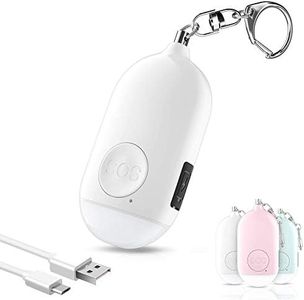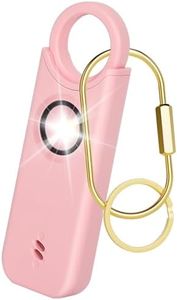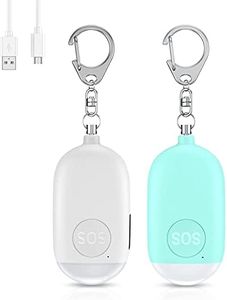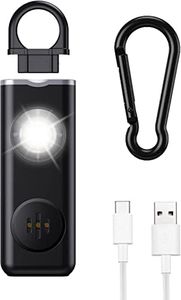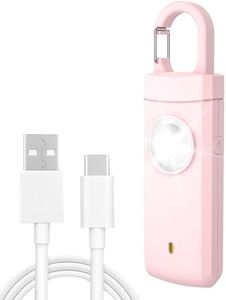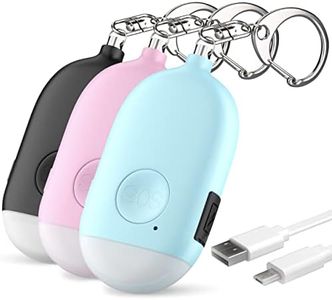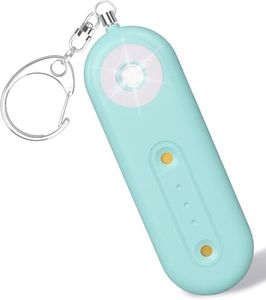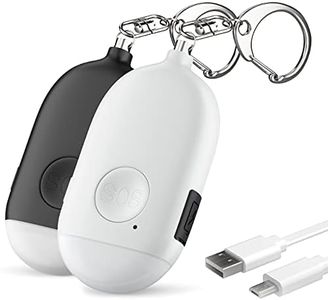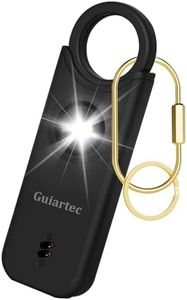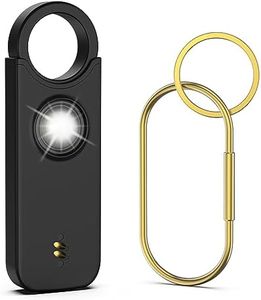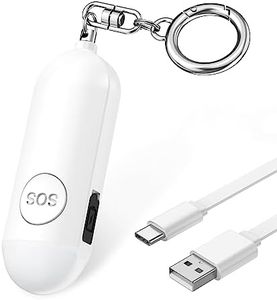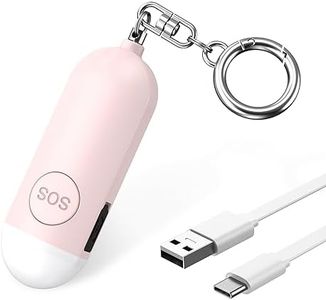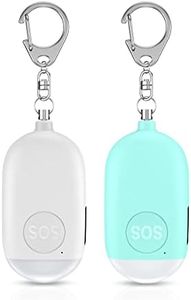We Use CookiesWe use cookies to enhance the security, performance,
functionality and for analytical and promotional activities. By continuing to browse this site you
are agreeing to our privacy policy
10 Best Personal Safety Alarms
From leading brands and best sellers available on the web.Buying Guide for the Best Personal Safety Alarms
Choosing the right personal safety alarm is all about finding a device that gives you peace of mind and fits your lifestyle. These alarms are small devices designed to draw attention and scare off threats when activated, so the right one should be easy for you to carry and use quickly in stressful situations. When navigating the options, consider where and how you’ll most likely use it—whether for late-night walks, travel, or daily commutes. Assessing different models starts with understanding their key features and deciding what matters most for your safety needs.Volume (dB)Volume, measured in decibels (dB), indicates how loud the alarm will sound when triggered. This spec is crucial because a louder alarm is more likely to attract attention and deter potential threats. Most personal alarms range from about 85 dB to 140 dB. Lower-end alarms (85–100 dB) are suitable for indoor or quiet environments but may be less effective outdoors or in city noise. Mid-range alarms (100–120 dB) are generally sufficient for most urban or suburban settings. High-end alarms (120–140 dB) are extremely loud and ideal for maximizing attention in busy environments. Consider where you'll be carrying the device; if you spend time in crowded or noisy areas, opt for a higher decibel alarm.
Activation MethodThe activation method describes how you set off the alarm, such as pulling a pin, pressing a button, or squeezing the device. This aspect matters because it affects how quickly and easily you can activate the alarm under stress. Pin-pull designs are generally reliable and hard to activate by accident, but may require two hands. Button or squeeze activation can be faster and convenient, especially if you might need to trigger the alarm quickly with one hand. If you have dexterity concerns or want immediate use, look for simple, accessible activation.
PortabilityPortability refers to the size, shape, and weight of the alarm. Since you’ll likely be carrying it daily, the device should be unobtrusive yet accessible. Small, lightweight alarms easily clip onto a keychain, bag, or belt, making them ideal for everyday carry. Larger models may offer extra features but could be cumbersome. Consider how you’ll carry the alarm—if you prefer pockets or small bags, prioritize compactness, while those who may attach them to backpacks or purses can opt for slightly larger designs.
Battery Life & TypeBattery life tells you how long the alarm will function before needing a new battery or recharge. This is important because you don’t want your alarm to die unexpectedly. Some alarms use replaceable batteries, while others have built-in rechargeable batteries. Replaceable batteries are convenient for long trips or backup, while rechargeable models are easy to top up regularly. If you want maximum reliability, check how long the alarm stays operational and choose one that matches your routines and how often you’re likely to check or charge it.
Additional FeaturesSome personal safety alarms come with extra features like built-in flashlights, strobe lights, or even phone connectivity. These features can enhance your safety by illuminating dark paths or alerting contacts. Flashlights are helpful for visibility, while connectivity features can send emergency messages. Decide if added functionality like a light or app integration aligns with your typical situations and if it will make you feel more secure.
